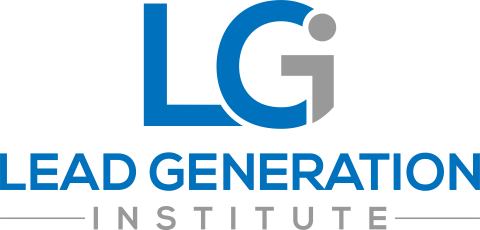Among the many tools a company has at its disposal when it comes to lead generation, probably none is more effective than webinars. Webinars are, as their name would suggest, online seminars, presentations, lectures, or workshops that help turn a presentation into a real-time conversation anywhere in the world.
Webinars allow for a large group of people to engage in discussions and training events, share files, slides, applications, and audio, even when they are not in the same place as the meeting host or in the same room that the event is taking place. Many webinar services will also offer live streaming options and can record your session to be published on Facebook or YouTube, used as gated content, or other such benefits.
If used correctly, this type of channel is capable of delivering a high ROI. They are perfectly capable of influencing decision makers within organizations that are looking to make big-ticket purchases. Statistically speaking, roughly 75% of executives will attend at least one webinar per month, with 77% of them saying that webinars have influenced their decision when considering a brand. What’s more, webinars tend to generate trust. Once an executive finds a vendor they trust, they tend to come back to attend other webinars and make further purchases.
That said, what are some best practices when using webinars for lead generation?
Provide Value
The biggest mistake most people make when using webinars is pitching their product. Webinars are meant to be informative and provide value, not to give a sales pitches. If the attendees pick up on this, they will brand you as dishonest. Product demos should only be offered by request, not by default. Your goal here is to start meaningful conversations and build relationships. Think helpful thought leader.
You can get topic ideas by paying attention to trends covered in the news, by listening to your prospects’ challenges, collecting information from trade shows and events or using tools like Google Trends as well as looking at your web analytics for the keywords used to find your site or the web pages they are viewing most often.
Choosing the Right Speakers
The speaker is another important aspect when it comes to drawing in webinar registrations. Typically, audiences will attend when the speaker has the authority of a c-suite or executive from major brands. If you are a smaller organization, however, you can invite a customer from a large brand to co-present. After all, nobody can present your story in a more favorable light than a happy customer. Don’t not use your Vp of Sales as a speaker. Salespeople no matter how great of a presenter have the hardest time not pitching their product or service.
Tailor Your Messaging Based on Audience Segments
If your target audience is spread through different industries, company sizes or job roles, it’s best to segment and cater to your audience based on those criteria. It’s important to note that what will resonate with some may not have the same impact with others. Each of them may have specific challenges and pain points, unique to their positions, or industries, and you should tailor your message for each of them. Ideally, your presentations are based on where the prospect is in the sales cycle.
Learn – I think I have a problem
Solve – How do I solve that problem
Compare – Am I solving that problem the right way
Purchase – Help me make a purchase decision
Loyalty – Show me you appreciate me as a customer
Keep it Under One Hour
In terms of length, there is no one-size-fits-all, and you should test various durations to see what works best. That said, relatively short webinars – typically between 30 and 45 minutes work best. If there are two or more speakers, however, the webinar can be a bit longer.
Your Webinar Marketing
On average, it takes at least three to four weeks to successfully promote a webinar and ensure that you will generate enough registrations or leads. You should also take into consideration that, once completed, you can use the recorded version to collect additional leads over time. Likewise, you can use the recorded version as a lead nurturing strategy for those who’ve joined late by sending them post-webinar emails with the recorded version.
Popular Webinar Platforms
Below are several webinar platforms that you can use.
- GoToWebinar – This is an easy-to-use platform with all-around useful features such as live hosting and recording, customizable landing page forms, email notifications to remind people of the upcoming event, live chat, polls, file sharing, and other engagement features, as well as reporting and analytics features on your performance. GotoWebinar has long been a favorite of marketers and starts at $59 a month for 50 attendees. However, if you want a custom url and have the ability to prerecord a webinar and conduct simulated live events you will need to buy their pro package which starts at $249 a month.
-
- WebEx (Owned by Cisco) – This platform combines a wide range of features for holding different types of events: online meetings, presentations, training sessions, and team collaborations. You also get an interactive whiteboard and other such tools for collaboration, file and app sharing, as well as automated calling to invite people to attend the webinar. They have plans starting at $15 a month for up to 50 attendees so you will need to vet the options for exactly what you need.
- Zoom – This is a more general-purpose video conferencing tool for business meetings and dedicated webinar solutions. It can hold up to 100 video participants with large panels of speakers. It also has polls, Q&As, live chat features, and text captions, as well as Facebook Live and YouTube Live broadcast integration. Zoom offers a free solution for meetings of up to 100 people but you really need to spend at least $65 a month for up to 100 webinar attendees. One downside is that they don’t offer a customizable web form you can embed on your website to collect registrations. You will have to look at using their web pages or integrating your pages to their registration engine using Zapier.
- Livestorm – This platform combines a wide range of features that can be used on any web browser mobile or desktop starting at $99 a month for up to 100 attendees.
If used as educational instruments, webinars are a great tool to generate and nurture leads. They will help make you a thought leader in your industry and create trust among your audience.
If you want to learn more about how to implement webinars in your business, contact us directly or subscribe to our newsletter.




